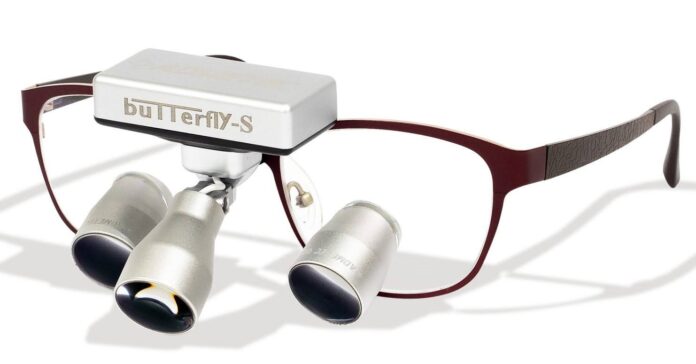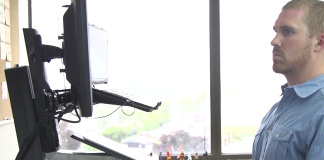In the contemporary world, where traveling by public transport has become an indispensable part of daily routine, headlamps have become a key option for safe driving both during the day and nighttime. Although we frequently think about headlights’ role in traffic safety, health-related aspects of these headlights, especially the impact on our eyes, are rarely considered. The article discusses the meticulous relationship between headlights and their implied effect on eye health.
Understanding Headlight Technology:
Before discussing the effects on the eyes, describing the hi-tech origin of even the most common headlights is important. Normally, these car headlights are fitted with either halogen, LED (Light Emitting Diode) or xenon sensors. Each type of camera is characterized by different illumination and color temperatures, which affect how they interact with human eyes in different capacities.
Impact of Headlights on Eyes
- Glare and Discomfort: One of the significant causes of glare that affects drivers is prolonged exposure to headlights. Glare is the phenomenon whereby blinding light overpowers the eyes, thus leading to such conditions as visual discomfort as well as short-term visual impairment.
- Blue Light Exposure: Nowadays, most forward-facing headlights are either extremely blue, which has a very short wavelength and high energy in the light spectrum, or extremely off-colour, known for its quiz aspect and hot-pink tint. Long-term usage of blue light, especially at night, can disrupt the circadian rhythm, which may impair the quality of sleep and the health of the eye.
- Dry Eyes and Irritation: The driver’s eyes constantly confront dust and sand when on the road, and the lights of other vehicles when driving mean that glare from other drivers’ lights is commonplace. These features make dry eyes and irritated eyes more likely. The airflow around a moving vehicle can make things worse regarding drying, which will be extremely uncomfortable and increase the chances of developing dry eye syndrome.
- Increased Sensitivity to Light: The eyes may become more photophobic during the adaptation to bright headlights because of the constant exposure. The increased responsiveness to light, commonly known as photophobia, can be why individuals often feel uneasy in normally lit environments, and eventually, these activities may be interrupted.
- Long-Term Vision Issues: However, the long-term effects of daily headlight usage have not been fully studied. There is some evidence showing that extended exposure to overwhelming sources of light might be associated with the development of certain vision problems, including cataracts and Age-related Macular Degeneration (AMD); the display of the best practices, such as taking regular breaks from VR/ AR devices and using eye protection glasses is critical.
- Visual Fatigue and Eye Strain: Eyes tend to become overused in many ways, including but not limited to nights and constant exposure to headlights. This can cause both eye fatigue and general visual strain. Despite this, it is indisputable that the eyes fail a lot to adjust the light conditions which tends to increase fatigue.
- Impact on Night Vision: The continuous exposure to the direct light of the car’s headlights can cause eyes to lose their ability to easily adapt to the dark conditions that require the sharpness of sight during nighttime. Although our eye is able to adjust to both bright and the lack of light conditions after a few minutes it becomes more difficult to judge things in the dark which is a dangerous trait. One example of this is night driving. Our eyes can not measure the depth correctly which may end in an accident.
- Increased Risk of Eye Fatigue-related Accidents: Eyes may get burned out due to the vehicle lights and get inattentive. This means that there is a long time delay before the brain reacts and this makes it difficult to make decisions quickly or to respond quickly while driving. The senses are ceasing to be sensitive and yet the eyes are fatigued and the speed at which they receive visual signals is also affected.
- Psychological Impact: Chronic exposure to bright headlights potentially causes drivers to experience increased stress and discomfort while in traffic. The concern for glare or eye strain may sometimes make drivers feel unconfident and uncomfortable, and thus, they are less likely to enjoy the ride.
Mitigating the Impact
- Properly Adjusted Headlights: The proper alignment and adjustment of headlights like dental loupe light are crucial steps towards reducing glare for both drivers and oncoming traffic, hence lowering the risk of accidents. Routine maintenance checks help to overcome misalignment problems and provide users with the most satisfactory lighting conditions.
- Use of Anti-Glare Coatings: Headlight glare reflecting on the lenses of eyeglasses or sunglasses can be reduced with the anti-glare coating. It keeps the driver’s eyesight from being bothered by excessive glare. They are made to remove glare from the surface and improve the feeling of a person’s visual comfort. Therefore, the coating provides eyes with a protective layer.
- Frequent Eye Breaks: Taking short breaks during running shifts of nighttime driving can be very useful in alleviating eye strain and fatigue. Try blinking regularly and looking at objects not too close to you. Doing so will prevent you from becoming too tired.
Way Forward
The use of a headlight is an indispensable part of today’s transportation. Nevertheless, it is necessary to wave a flag about the impact on eyesight. Various negative factors vary from glare and blue light sources to dry eyes and visual fatigue due to continuous headlight exposure. As people become more aware of these effects and protective measures, they can put eye health first and stay safe when they move along the lighted roads of their lives. Similarly, such measures as adjusting dental loupes headlights at the eye level, using anti-glare coatings, and taking frequent breaks during long trips are among the preventive ones that can be taken to avert the adverse effects of frequent use of high beams on the eyes, therefore providing safer and more comfortable driving conditions.Schultz Loupes provides top-quality dental loupes and dental headlights straight from the factory to your office.










